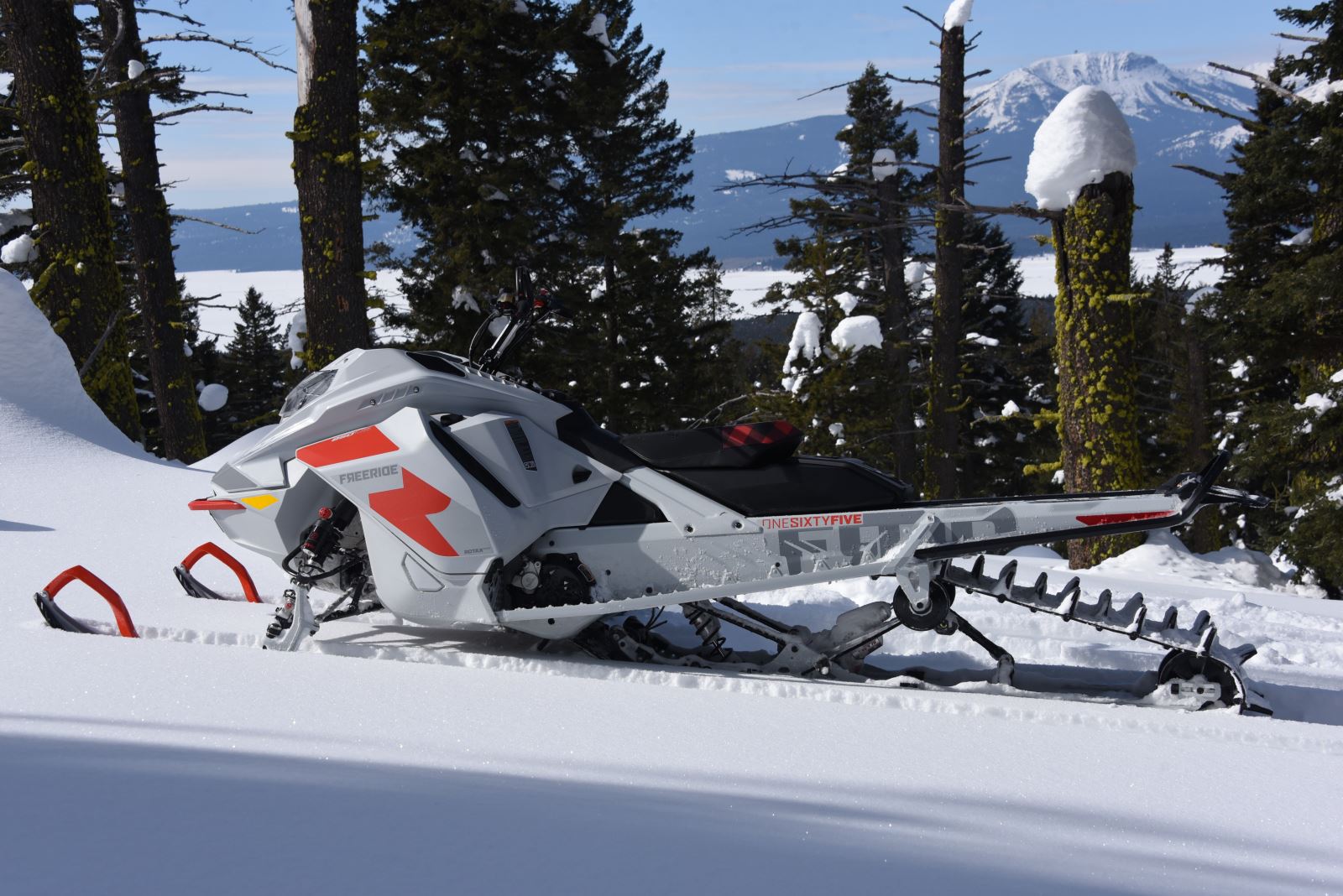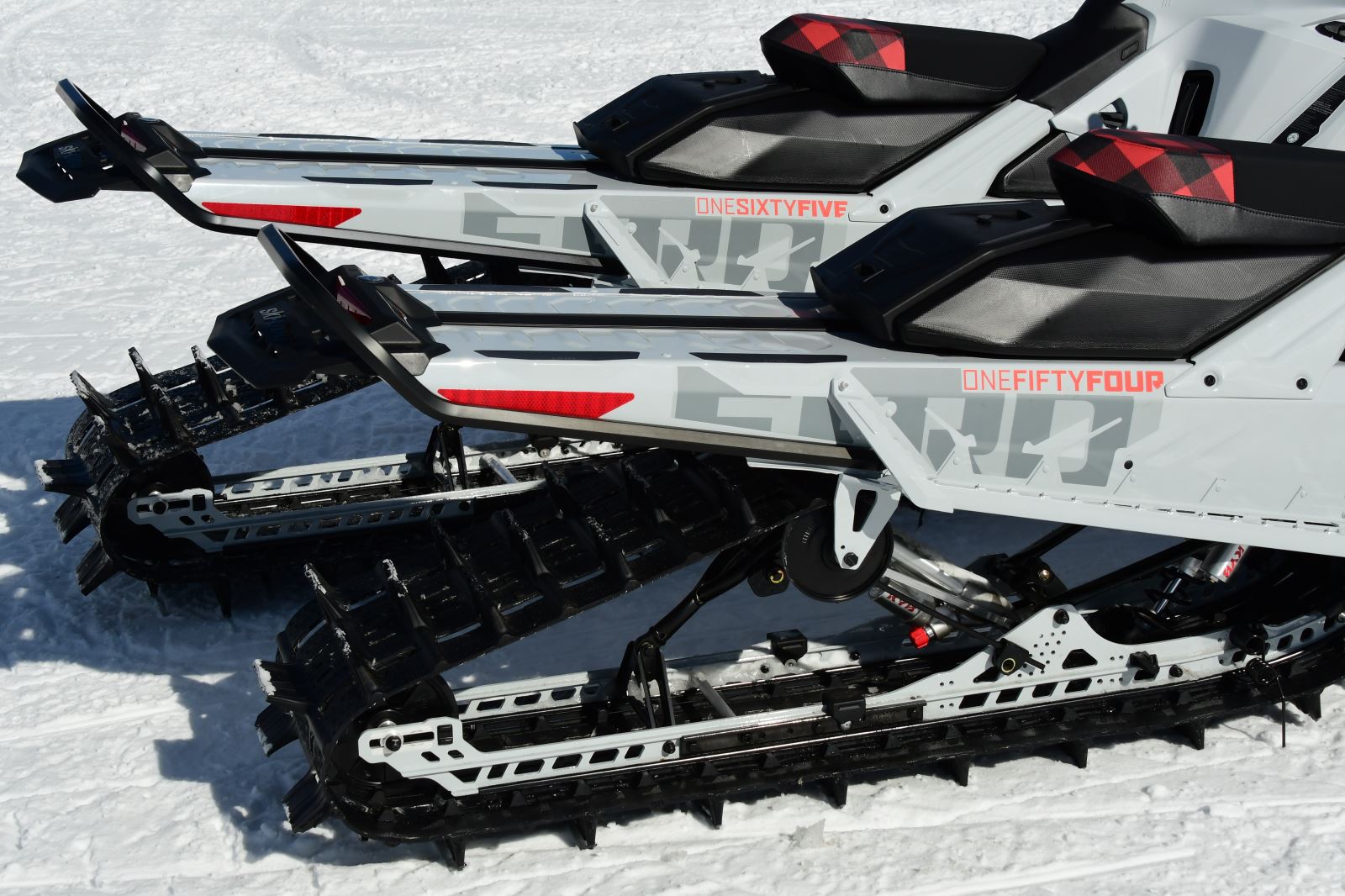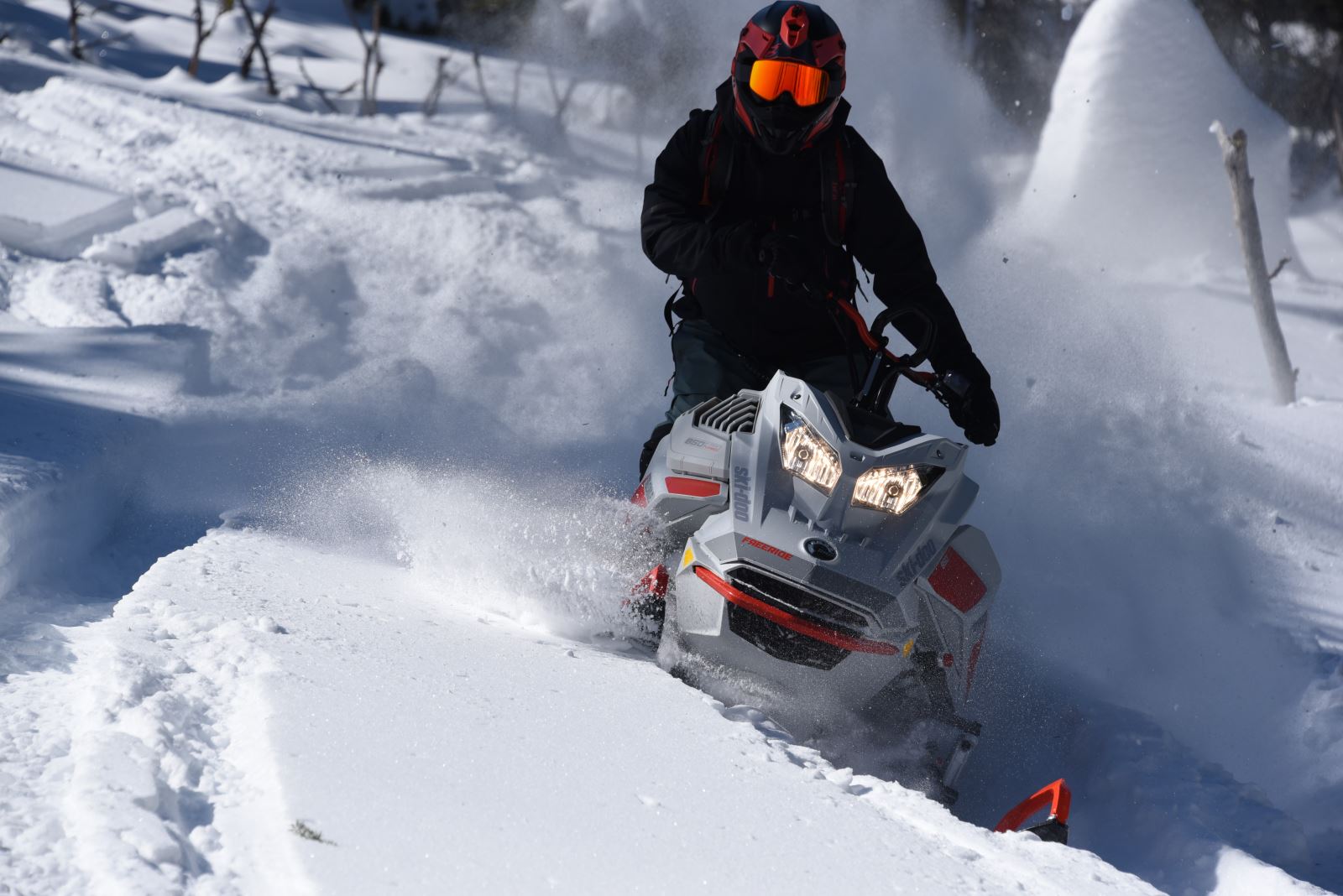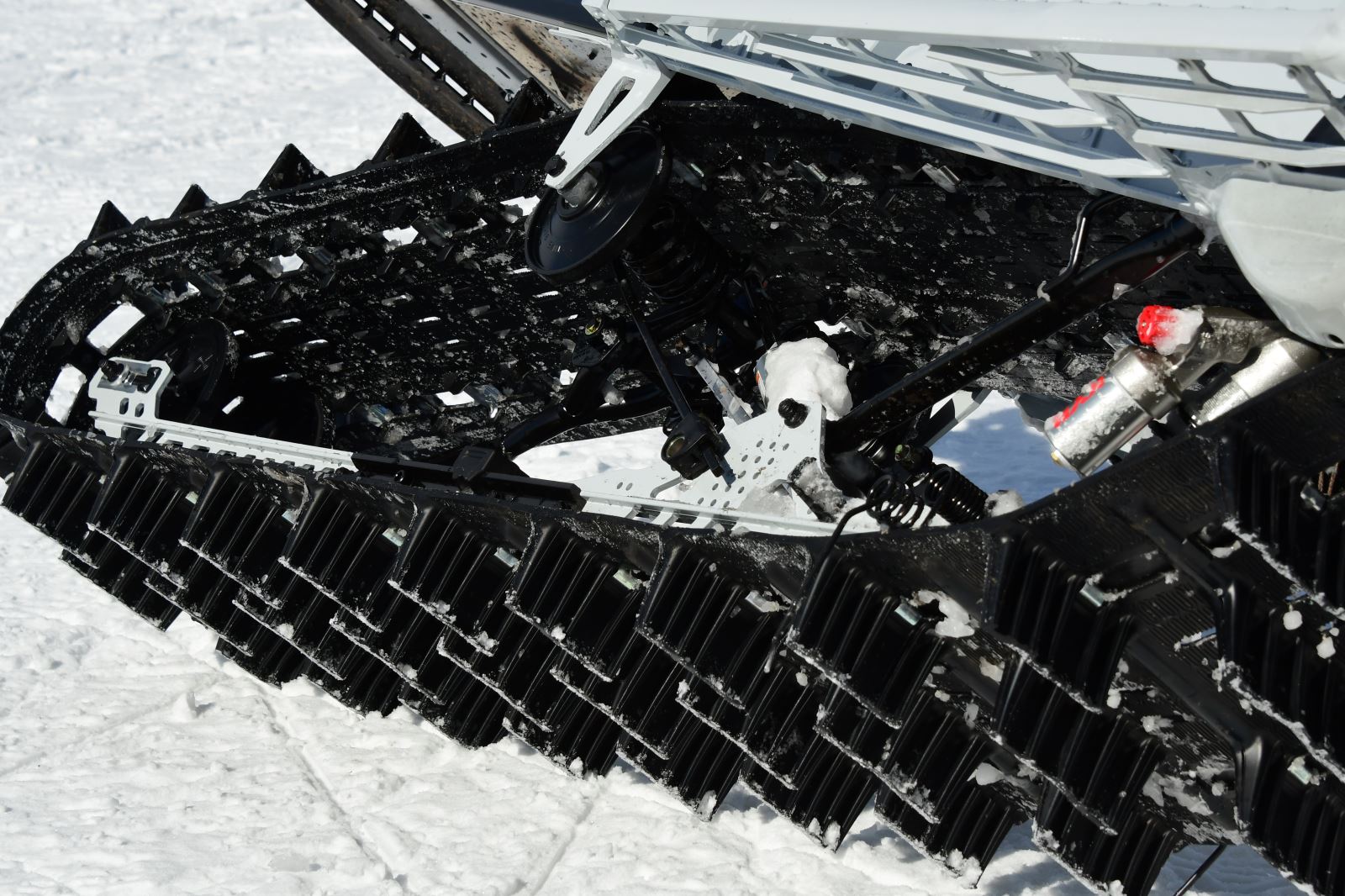If you want a little power, wouldn’t you want a little bit more? Exactly what price are you willing to pay to have your snowmobile putting out sea-level performance while riding at 9,000 feet elevation?

Those are the questions you must ponder when you’re trying to decide between the 2021 Ski-Doo Freeride and the Freeride Turbo. Basically, it will cost you $2,750 to have a factory-installed turbo on your Freeride. Now the question: Is it worth it?
Basic two-stroke science teaches us that as you increase in elevation, you decrease in horsepower because there is less air available to make power. In other words, your 850cc engine at 10,000 feet is generating the same horsepower as your 600cc engine is at sea level. This means for mountain riders the difference in performance between an Freeride Turbo and a Freeride is similar to the difference in performance between a Freeride and a Summit 600. Keep in mind, even a Summit 600 in elevation has adequate power. The Freeride just has about 40 hp more … and the Freeride Turbo has an additional 40 hp over the Freeride.

So again, how much power do you want/need?
The past spring the editors of SnoWest spent substantial time riding the Freeride Turbo and the Freeride. Prior to the introduction of the Freeride Turbo, we were very content with the performance of the Freeride. Although a bit heavier than the Summit X, the Freeride still handled well in the deep snow.
But once we got on the Freeride Turbo, the power allowed the sled to get on top of the snow faster and handle even lighter than the Summit X. Power does have its perks.
The Freeride is designed for mountain riders who not only want to ride in the steepest and deepest terrain, but also are the kind of riders who like big drops or pounding terrain more aggressively. Basically, the Freeride is a Summit X with a much better shock package.
The only thing the Freeride has that the Freeride Turbo doesn’t is the option of a 146-inch track. Both come with 154-inch and 165-inch track options in 2.5- or 3-inch lugs. The only true difference is the Freeride has a liquid-cooled, two-stroke eRave Rotax engine and the Freeride Turbo has a liquid-cooled, two-stroke turbocharged eRave Rotax engine.
How Things Work
Basically, a turbocharged engine takes the thin air found in high elevations and compacts it to the same density as sea level air. More air allows for more fuel stoking your fire. More fire generates more horsepower. In the past, engineers had to reduce the fuel delivery levels to match air availability. Not so with a turbo.

The Freerides benefit from a Rotax 850 E-Tec engine that has been improved to deliver 165 hp at sea level. The engine is matched with the pDrive primary clutch to be 30 percent faster responding to throttle input. This performance is then transferred to the QRS secondary clutch and delivered to the track for precise response.
We really noticed how positive the Freeride Turbo handled at elevation. When you’re sliding through trees while holding your sidehill and come across a tight drainage creek crossing, it’s nice to launch your sled knowing there’s enough thrust to lift your front up so your skis can reach the other side rather than spearing into the creek wall. Without the turbo you’re a little more restricted because the gap has to be a lot closer due to the lack of sudden thrust.
You are also able to pack a little more speed going uphill through trees because your power recovery is much faster when you’re forced to back out of the throttle during a course correction.
Common Denominator
Aside from the power, performance and price, the Freeride Turbo and the Freeride are basically identical.
Both receive the short tunnel to allow more track and less drag in the snow. Both have the one-piece Polypropylene hood that eliminated six pounds while optimizing ventilation and heat dispersion to keep the clutches cooler and performing better. The lightweight hood also features improved noise reduction.
Following the lead from the Summit line, the Freeride is purpose-built for deep snow and terrain riding. This means a lower seat, smaller diameter handlebars and a low handlebar strap to offer ultimate leverage when riding near vertical terrain.
Handling has also been improved with revised ski spindles to keep the ski tips from pointing up and creating a plow-like effect in deep heavy snow.
The Freerides feature KYB Pro shocks that are standard on the performance trail sleds. The remote reservoir reduces shock fade in the continuous bumps. These shocks are both rebuildable and revalveable and feature an Easy Adjust compression damping knob that makes for quick adjustments on the snow.

The tMotion rear suspension allows you the ability to “lean steer” with minimal effort. Rigid full-length extruded aluminum running boards feature a sure-foot traction design with wide openings for exceptional snow evacuation. The boards offer a flat platform for comfort when in the standing position.
Finally, both feature the Shot Starter for simple push-button starting after the engine has been initially started during a ride. Shot is a unique and lightweight feature that gives you basically electric start throughout the day.
Now for the cost of this technology: The Freeride with a 165x16x3-inch Powdermax II track retails for $16,349. The Freeride Turbo with the same track retails for $19,099. You are paying $2,750 more for a factory-installed (with warranty) turbo.
So the question is: Is the price for power worth it?